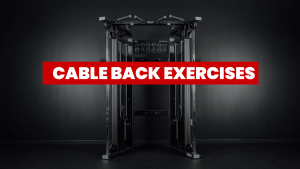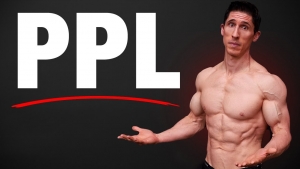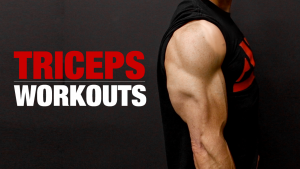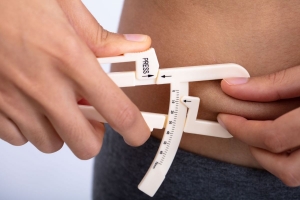
THE ULTIMATE CORE WORKOUT GUIDE
When it comes to core workouts, most people are missing the mark.
Popular belief might have you doing endless crunches with light dumbbells in a seated position, but if your goal is a strong core, you need to target your entire core with the right core exercises.
If your core isn’t getting stronger or if you’re not seeing the results you want, it’s likely your core workouts are missing something crucial…
In this complete guide to core workouts, I’ll show you how to engage all the key muscles: the rectus abdominis, transverse abdominis, and the oblique muscles.
We’ll cover why training the core properly is essential for your overall strength, posture, and movement, and I’ll share the most effective core exercises—it doesn’t matter if you’re working with just a single dumbbell, an AmazonBasics Medicine Ball, or your own body weight.
This step-by-step guide is designed to help you find exactly what you need, from perfecting your plank position to mastering Russian Twists and Bicycle Crunches.
You’ll also learn how to brace your core, maintain a neutral spine, and use advanced core routines to build strong core muscles that support your torso, improve your lifts, and reduce belly fat.
Here’s what I’ll be covering in this core strength training guide:
1) CORE MUSCLES ANATOMY
When it comes to core training, it’s not just about going through the motions.
If you want to build a strong core, you need to engage the mind-to-muscle connection to see real results.
The core muscles—your rectus abdominis, transverse abdominis, and obliques—don’t just work when you’re doing crunches or holding a plank position; they need to be fully engaged during every movement, from Russian Twists to Hollow Holds.
Keeping your core tight and maintaining a neutral spine throughout each exercise, no matter if you’re in a standing position or on the floor, is crucial.
A proper starting position, like a Regular Plank or High-Plank position, helps target deep core muscles and helps brace your core the entire time.
This isn’t just about aesthetics—core strength improves your overall form, helps stabilize your spine, and protects your body during daily life and compound lifts like Barbell Squats.
Remember, if you don’t feel the muscles working, you’re missing out on the benefits.
The next time you pick up a dumbbell, engage that belly button to spine, and let’s make every rep count!
Here are the muscles you’ll be targeting during your core workouts:
RECTUS ABDOMINIS


The rectus abdominis is the MVP of core workouts, especially when you’re rolling out with an ab roller.
This muscle runs from your chest down to your pelvis and is responsible for that six-pack look, but it’s not just about the aesthetics.
It’s one muscle working together—upper, lower, and everything in between—to provide the core stability and strength you need for every rep.
Whether you’re in a pushup position, doing Hollow Holds, or hitting weighted ab workouts with a heavy dumbbell, your rectus abdominis keeps your entire core braced the entire time.
It works alongside the external obliques, internal obliques, and transversus abdominis to support your upper body, maintain a neutral position, and ensure correct form.
From the tabletop position to a 45-degree angle Russian twist, this muscle is constantly firing, helping you avoid a weak core and building sufficient core strength for everyday life and advanced exercises alike.
So, if you’re holding Plank Pull-Throughs or lifting your chest with elbows braced, make sure your rectus abdominis is doing the work.
Train it smart, brace core, and keep pushing for a stronger core every time you hit the mat.
EXTERNAL OBLIQUES


The external oblique muscles are the diagonal muscle fibers running from your ribcage to your pelvis, key for core rotation and core stability.
These muscles surround your rectus abdominis and are essential for powering through core workouts like weighted core moves and rotational movements.
Properly engaging your external obliques during any movement—for example: doing a twist torso, performing a Hollow Hold position, or holding a kettlebell above shoulder height—ensures perfect form.
Keep those feet flat, brace the core, and use your obliques to power through every rep, especially if you’re in a seated position or a 90-degree angle during your 20-minute core workout.
INTERNAL OBLIQUES


Opposite your external obliques, the internal obliques angle toward your midline, giving you rotational power for core workouts.
These muscles are critical for maintaining core tension and stability during every movement, from ab roller rollouts to weighted core exercises.
When you engage your internal obliques, you brace your core, keep your lumbar spine stable, and prevent your form from breaking down.
When you’re in an extended position, doing reverse movements, or holding a lightweight dumbbell at chest height, your internal obliques keep your entire core tight and your position with abs braced strong.
Don’t neglect these muscles—they’re key to an effective core workout that engages your entire body.
TRANSVERSE ABDOMINIS (core stabilizer muscles)

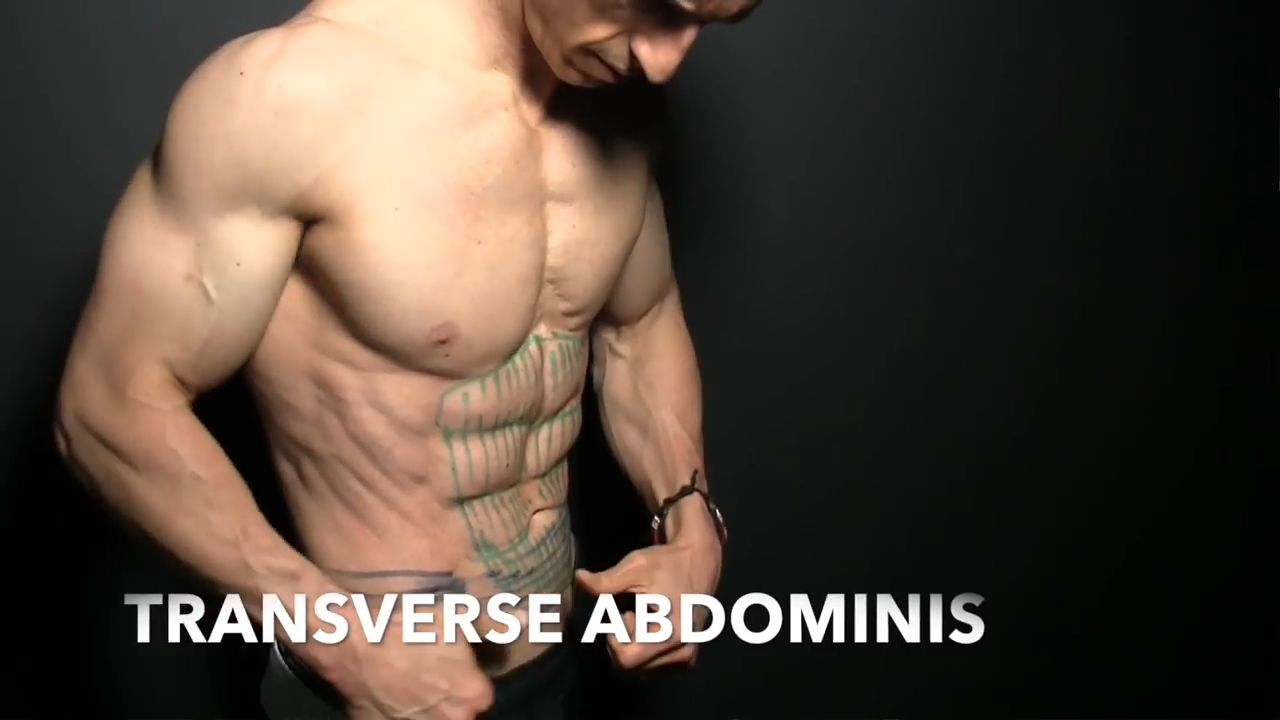
Think of the transverse abdominis as your natural weight belt, wrapping around your midsection like a natural brace.
This deep core stabilizer is key to maintaining core tension and stability during every movement, regardless of whether you’re doing hip lifts or holding a plank.
To engage the transverse abdominis, draw in your belly like you’re pulling your abs toward your spine.
Think of it as your secret weapon during 8-week core training—keeping your entire core braced the entire time.
From the floor with knees bent to a half-kneeling position with adjustable dumbbells in hand, activating this muscle improves your stability and supports everything from your shoulder blades to your pelvic floor muscles.
Train your transverse abdominis right, and you’ll boost core strength, shred body fat, and elevate your athletic performance—no matter your fitness level.
SERRATUS

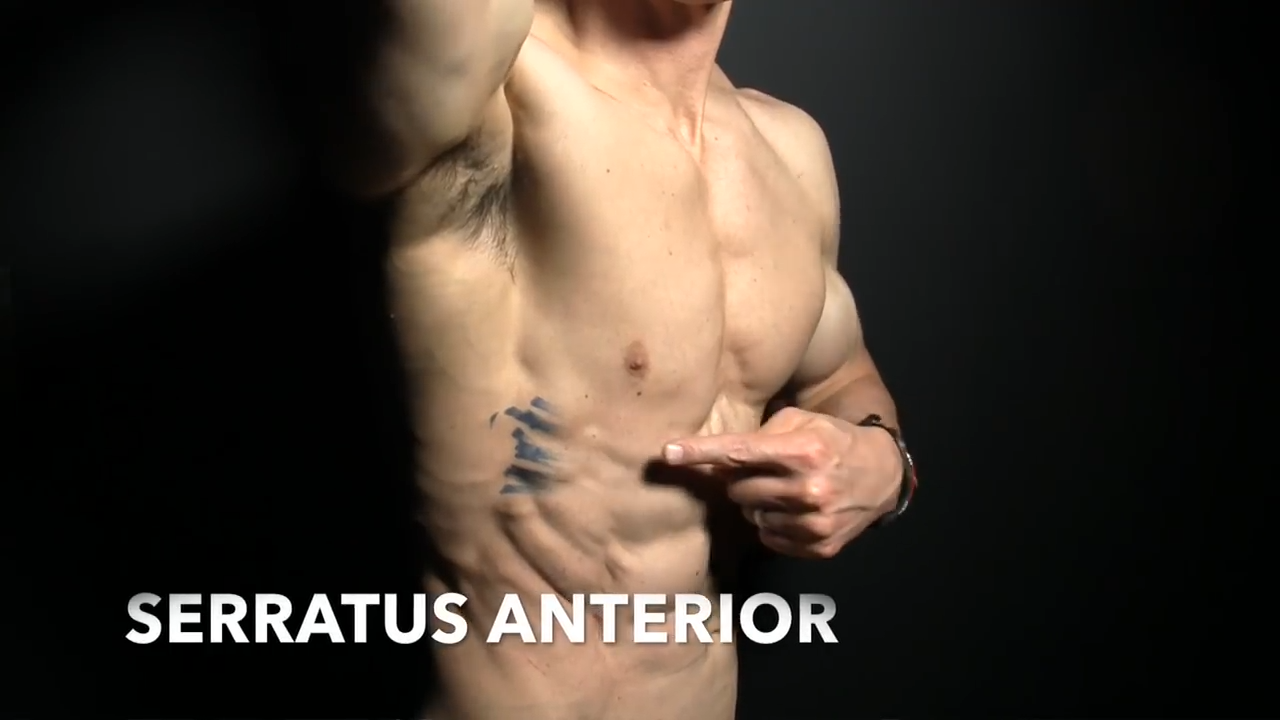
The serratus anterior is often forgotten in core workouts, but it plays a critical role in stabilizing your upper body.
This muscle keeps your shoulder blades locked onto your rib cage, maintaining a strong core, and improving the entire movement during exercises like Planks, Pushups, and Rotations.
Training your serratus is all about function.
Engaging this muscle properly enhances shoulder stability and helps prevent form errors, especially when you’re lifting heavier weights, performing abdominal crunches, or even using a pull-up bar.
If you’re pushing a weight plate or working with light dumbbells, activating your serratus will help you keep your shoulder blades tight, boosting performance in every training session.
2) WHY ARE CORE EXERCISES IMPORTANT?
Core exercises aren’t just about getting a shredded six-pack—they’re the key to unlocking full-body strength, stability, and performance.
Let’s break down why your core should be the foundation of every workout.
IMPROVES STABILITY AND BALANCE
Your core stabilizes your entire body, no matter if you’re standing with feet shoulder-width apart or holding a dumbbell in hands.
Movements like a Squat, Plank, or even lifting your left elbow to shoulder height with a weight plate require a stable core to prevent your body from wobbling.
A stronger core keeps your hips, shoulders, and feet locked in place.
ENHANCES LIFTING POWER
Every time you lift—whether it’s a medium-weight dumbbell, slam ball, or even your body weight—you rely on your core.
It links the upper and lower body, providing the power needed to generate force from the ground up.
Strong core muscles allow for better transfer of energy, meaning you’ll lift heavier weights with better form, especially in compound exercises like Squats or Pull-Ups.
PREVENTS INJURY
Engaging your core protects your spine and pelvis.
If you’re doing a cable pulley exercise at shoulder level or keeping your hips off the floor during a plank, a strong core ensures proper alignment and form.
Weak core muscles lead to improper movement patterns, putting strain on your back, knees, and shoulders—leading to injuries.
SUPPORTS ATHLETIC PERFORMANCE
From twisting your torso during rotational movements to engaging your obliques in a plank position, athletes rely heavily on their core.
If you’re a beginner with your feet flat on the floor or an advanced lifter twisting with a ball of foot pivot, strong core muscles provide the stability needed to boost performance across all sports.
REDUCES BODY FAT AND IMPROVES POSTURE
Consistent core exercises, when paired with a solid nutrition plan, help reduce body fat around the midsection.
The more muscle you build in your abdominal muscles, the more calories your body burns throughout the day.
Plus, engaging the core ensures your shoulder blades, hips, and spine are in perfect alignment, improving your posture in everyday life.
3) WHAT ARE THE BEST CORE EXERCISES?
Let me tell you what the best ab workout isn’t.
It’s not cranking out endless crunches or knocking out a set of bicycle crunches. That’s outdated thinking.
The best ab workouts hit every region of your abs—all the abdominal muscles—and do it in the right order.
Not only will you be training all the muscles, but you’ll be hitting each core function the abs are responsible for.
Let’s break these down:
SPINAL FLEXION

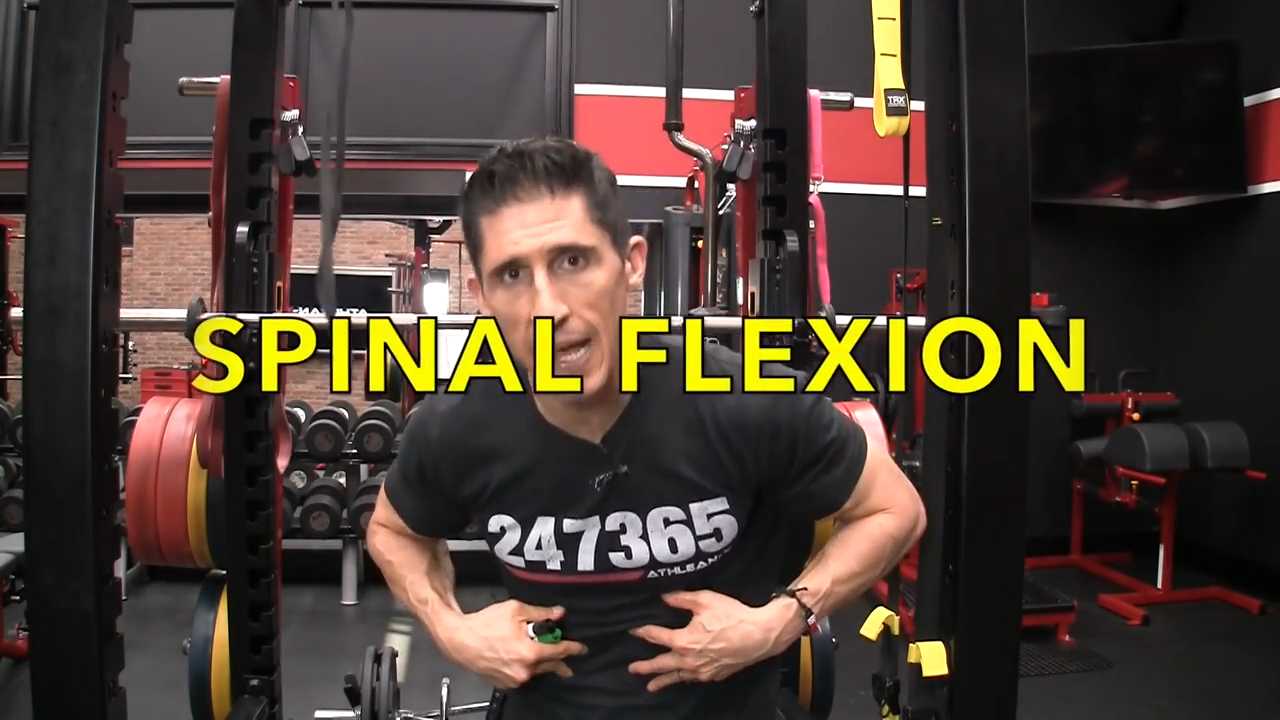
Spinal flexion is all about forward bending—think crunches, but with correct form.
Your spine moves back and forth, pulling your torso through center.
With your feet hip-width apart and wrists over chest, you want to make sure you’re controlling the movement to hit the abs right.
EXTENSION STABILITY


This is where you need to lock in that core.
Your abs pull you forward from spinal extension, keeping your hips off the floor and your pelvic floor muscles engaged the entire time.
Whether you’re lifting your arm to shoulder level or keeping your foot flat, extension stability is key for strength and balance.
ANTI-LATERAL


Your abs also work to stop unwanted side-to-side motion.
Imagine holding a plank with your left shoulder and left foot locked in.
You don’t want to sway, right?
That’s your anti-lateral stability kicking in, keeping your body in check, be it you’re using a suspension trainer or a set of dumbbells.
ANTI-ROTATION

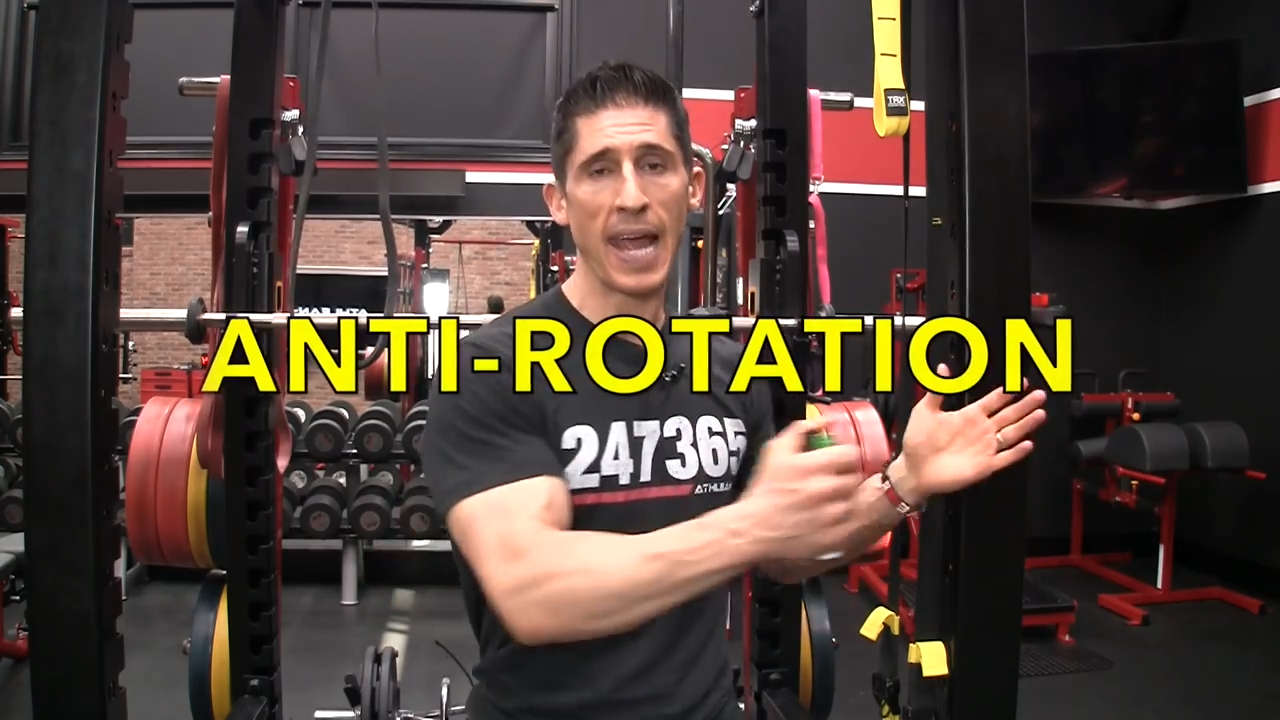
When it comes to preventing unnecessary rotation, this is where anti-rotation steps in.
Your abs brace to stop your torso from rotating when it shouldn’t, even if you’re doing rotational exercises with your feet at shoulder width or holding a heavy dumbbell with your arm on the floor.
ROTATIONAL STABILITY


Now, when you want controlled rotation—like a Cable Woodchopper—it’s your abs and obliques working together to create rotational stability.
Keep your angle from body locked in as your torso twists through center.
This ensures every movement is intentional, not sloppy.
ROTATIONAL POWER


Finally, when it’s time for rotational power, your abs and obliques are your go-to muscles for generating explosive twists.
Think about throwing a punch or swinging a slam ball.
It’s about generating speed and power, with your core muscles driving the movement from your left knee to your shoulder.
I’m going to present my favorite core exercises based on the function of the core muscles mentioned above:
SPINAL FLEXION: LEVITATION CRUNCH (UPPER ABS)

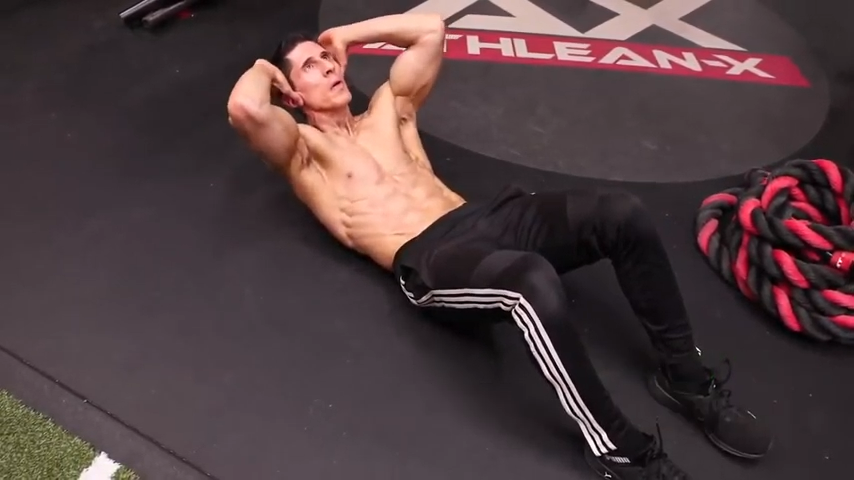
HOW TO DO THE LEVITATION CRUNCH:
- Start by lying flat on your back with your feet hip-width apart and feet flat on the floor.
- Keep your arms behind your head and your shoulder blades off the floor.
- Now, here’s the key: lift your upper body toward the ceiling in a curling motion but keep it small. Don’t yank your neck or pull your head—let your shoulder blades guide the way.
- Keep your core tight the entire time by pulling your belly button toward your spine. You want your abs doing the work, not your neck. This isn’t about cranking your head forward—it’s all about control.
- Keep your hips on the floor and focus on quality over range of motion. No need for fancy equipment or a trainer kit—just pure upper ab activation.
WHAT MAKES IT EFFECTIVE: This is an alternative to crunches that strips away the unnecessary neck strain. The Levitation Crunch targets the upper abs directly without relying on momentum. It’s a small movement, but that’s the point—you’re focusing the tension on the abs, not pulling your shoulder with tricep or over-extending your neck. You don’t need a celebrity trainer or NASM-certified personal trainer to figure this out—it’s simple, effective, and can fit into any routine. If you’re in a 10–18-minute time frame or looking for a quick ab finisher, the Levitation Crunch gets the job done.
SPINAL FLEXION: SWIPER (LOWER ABS)

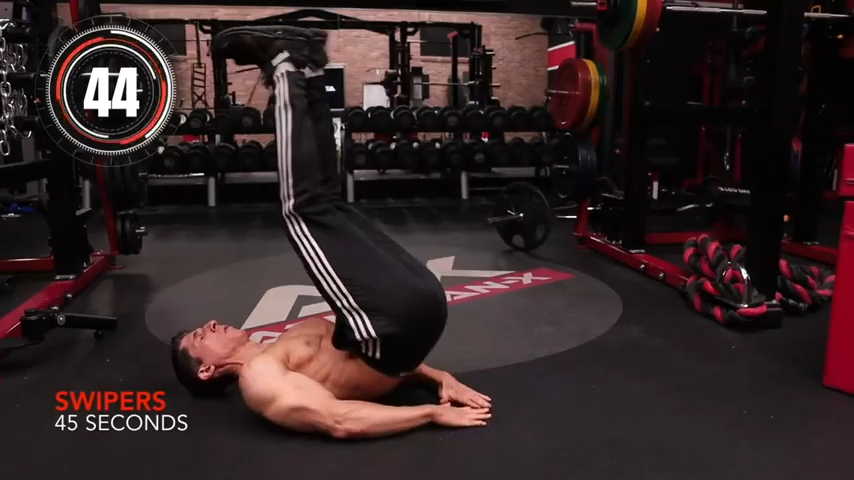
HOW TO DO THE SWIPER:
- Start with your upper body flat on the floor and your arm on floor at your sides, keeping everything in a floor parallel position.
- Now, bring your knees toward your chest in a controlled curling motion, focusing on lifting your hips off the floor.
- The goal here is to get your tailbone off the ground, engaging those lower abs as you bring your legs behind your body.
- As your hips reach height, swipe your hands underneath your tailbone in a half-circle motion.
- This movement ensures you’re clearing the floor with your tailbone and adds an extra challenge for your core strength.
- Keep the position with feet and maintain control the entire time.
WHAT MAKES IT EFFECTIVE: The Swiper gives you real-time feedback on your form. If your hips aren’t lifting enough, you’ll know right away. This slow, controlled movement targets the lower abs like no other, ensuring you’re getting that extra burn without needing a personal trainer hovering over you. With hips off the floor and hands swiping through, you’re hitting those lower abs perfectly. This exercise can be added to your routine, especially if you have a short period of time or want to round out your ab workout for maximum effect.
EXTENSION STABILITY: HOLLOW ROCKS


HOW TO DO HOLLOW ROCKS:
- Lie on your back with your lower back pressed into the floor, legs extended, and arms overhead.
- Your shoulder blades and feet should be slightly off the ground, creating that hollow, boat-like shape.
- Pull your belly button to your spine and lock in your core. Your entire body should be tight, from your legs to your arms. This is where the real challenge starts.
- Begin rocking by using your core, not your legs or arms. The movement should come from a slight tilt of your shoulder blades and hips—not by flailing your limbs. Your lower back stays glued to the floor the entire time.
- Use controlled momentum to rock forward and backward. As you rock, your legs and arms stay in position, creating a smooth, continuous motion.
- You’re not just rocking for the sake of it—you’re maintaining that core tension the entire time.
WHAT MAKES IT EFFECTIVE: This movement really tests if you can maintain that stability while adding motion. Can you keep your core tight and engaged when things get dynamic? If you can, you’re building serious core control.
ANTI-LATERAL: SIDE PLANK (THREAD THE NEEDLE)


HOW TO DO THE SIDE PLANK (THREAD THE NEEDLE):
- Get into a Classic Side Plank with your left elbow directly under your shoulder, hips off floor, and your feet staggered.
- Make sure your body forms a straight line from your head to your feet, and your hip height is locked in.
- Brace your transverse abdominis and obliques to stabilize your hips and keep everything tight. Your goal here is to keep your hips at hip height and prevent any sagging or rotating.
- Without letting your hips drop, rotate your upper body, and reach your right arm underneath your torso—”threading the needle.” The rotation comes from your upper body, while your legs stay static, and your hips stay off the floor.
- Reverse the movement by rotating your body back to the starting position and reaching your right arm up towards the ceiling. Keep your core braced and your hips lifted.
- Continue this threading and extending motion for the desired number of times. Focus on controlled, slow reps to maximize core activation and keep your hips off the floor.
WHAT MAKES IT EFFECTIVE: By adding rotation to the Side Plank, you’re not just hitting the oblique muscles—you’re challenging your core to stay stable while your body rotates. This movement adds a significant challenge to your core routine, engaging your triceps and shoulders, and keeping your entire core locked in for the duration of the exercise.
ANTI-ROTATION: PALLOF PRESS


HOW TO DO THE PALLOF PRESS:
- Set up a resistance band or cable at chest height, standing sideways to the anchor. Plant your feet at hip width and lock that base down—you’re going nowhere. Let your core do the heavy lifting.
- Hold the handle with both hands at the center of your chest. Your triceps should be braced and your core tight. The key here is to avoid any rotation. That band or cable is trying to twist you, but you’re not letting it happen.
- Now, slowly extend your arms straight out in front of you until your elbows are fully locked. Keep your core braced and resist any movement or rotation of your torso. Imagine a fitness instructor telling you to stay rock solid—this is where your stability kicks in.
- After the press, bring the handle back toward your chest under control. No rushing—make sure you’re not letting your leg behind body or any other part shift during the movement. Core stays tight the entire time.
- Perform controlled reps, then switch sides and repeat the same motion. The goal is stability, so don’t cheat by letting your hips shift or torso twist.
WHAT MAKES IT EFFECTIVE: No fancy tricks here—just a basic move that builds serious core strength. Whether you’re a fitness writer or just someone looking to build that functional strength, this one’s a game changer.
ROTATIONAL STABILITY: RUSSIAN TWISTS

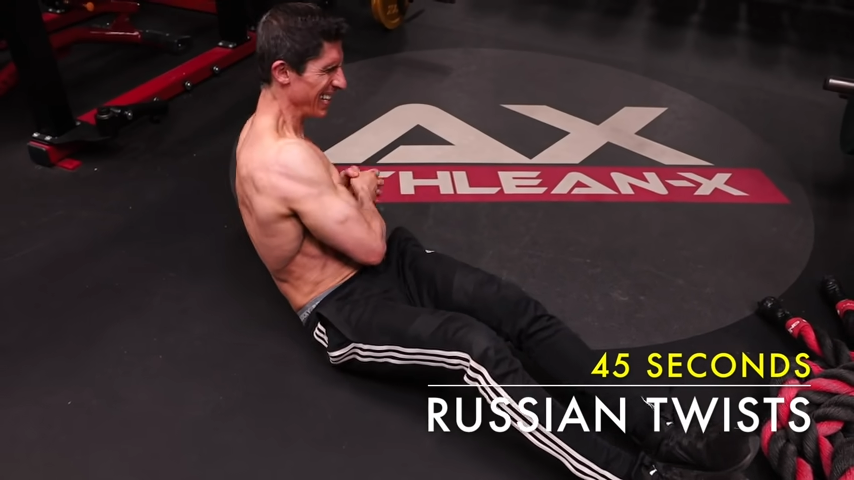
HOW TO DO RUSSIAN TWISTS:
- Sit down on the floor with your knees bent, feet flat, and your core tight. Lean your torso back to about a 45-degree angle—this engages your core right from the start. Keep your spine straight and shoulders pulled back.
- Stretch your arms straight out in front of you, hands clasped together. Want to make it harder? Grab a medicine ball and hold it close to your chest.
- Twist your torso to the right, driving the movement from your shoulders. Push your left elbow back like you’re aiming for the floor behind you but put your tricep on floor. Keep control. This isn’t just a fling—make sure your core is controlling the motion.
- Come back to the center, keeping your core tight the whole time. Then twist to the left, driving your right elbow back and feeling the burn in your obliques.
- Keep the movement slow and steady—no rushing. You’re not just rotating your arms; your whole upper body should follow the twist. Engage your core muscles throughout the entire motion.
WHAT MAKES IT EFFECTIVE: The Russian Twist is all about controlled rotation. Done correctly, this move hits your entire core—especially the obliques—and fires up the deeper core muscles too. Keep the focus on steady, controlled movements, and your core will thank you.
ROTATIONAL POWER: LANDMINE ROTATION

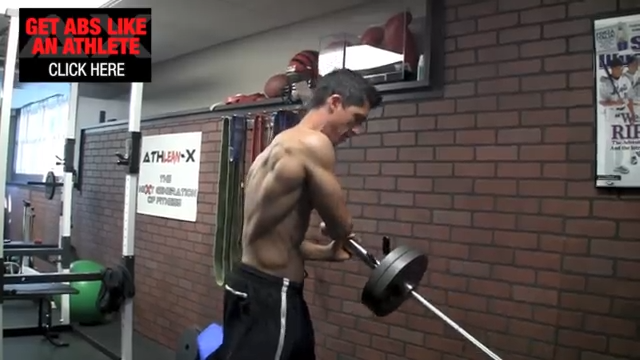
HOW TO DO THE LANDMINE ROTATION:
- Anchor one end of a barbell in a landmine attachment or corner of the gym. Grab the free end of the barbell with both hands, keeping it just in front at chest height, with your arms extended. Your feet should be slightly wider than hip-width apart, knees soft, and your core braced.
- As you prepare to move, your entire core needs to stay tight. You’re going to resist unwanted movements and only rotate where it matters. Brace as if you were about to squat until thighs are above parallel, staying solid and balanced.
- Start by rotating the barbell down to one side, allowing your shoulders and torso to follow. Keep elbows slightly bent but stable, as they’ll act as stabilizers throughout the movement. Make sure the rotation comes from your core—not from bending your back or swinging wildly.
- Once you’ve reached one side, explosively rotate the barbell back to center and continue the motion to the opposite side. Keep the movement fluid but controlled. Your legs stay grounded while your upper body drives the rotation.
- Throughout the entire movement, you’re resisting the urge to let your body sway or lose tension. Keep your hips steady and your core engaged so you don’t lose power in the twist.
WHAT MAKES IT EFFECTIVE: Landmine Rotations are a perfect way to build rotational core stability without sacrificing control. So, lock in your form, twist with purpose, and let your core do the work.
ENTIRE CORE: SLIDING AB TUCK


HOW TO DO THE SLIDING AB TUCK:
- Kick things off in a high plank—hands shoulder-width apart, shoulders stacked over your wrists, and your body straight as a board from head to toe. Keep that core locked in tight.
- Using socks or sliders, slide your feet backward and then bring them in toward your torso with a slight twist, alternating sides. This isn’t just a basic tuck—rotate to hit your obliques while you’re at it.
- Here’s the key—curl your pelvis into a posterior pelvic tilt. You’re not driving with your hip flexors; you’re pulling with your abs. Keep your entire body stable—no sagging hips, no arching back.
WHAT MAKES IT EFFECTIVE: You don’t need any fancy gear for this one, and you’re hitting everything: rectus abdominis, obliques, and deeper core muscles. This exercise combines stability, rotation, and strength in one move, making it a full-on core crusher. Plus, it’s simple, but it burns!
For all the best core exercises to hit each function of the core, check out our Perfect Abs Workout article.
4) WILL CORE WORKOUTS BURN STOMACH FAT?
Let’s clear this up right away—core workouts alone won’t burn stomach fat.
You can do all the crunches and planks in the world, but if you’ve got belly fat, those abs are staying hidden.
Fat loss doesn’t work like that. Spot reduction? It’s a myth.
To see your abs, you need a whole-body approach, and it starts with dialing in your nutrition and shedding body fat across the board.
IS IT POSSIBLE FOR ANYONE TO GET ABS?
Here’s the good news: Yes, anyone can get visible abs.
But—and it’s a big “but”—it’s going to take the right combination of nutrition, exercise, and discipline.
The first step is reducing overall body fat.
As you start leaning out, the upper abs are usually the first to pop. That top tier of your six-pack is like a preview of what’s possible if you keep putting in the work.
Now, those lower abs? That’s a different story.
The lower belly is one of the toughest places to lose fat, both for men and women.
It’s the last place body fat likes to hang on, so you’ve got to dig deep and stay consistent if you want to reveal those stubborn packs.
And here’s the kicker:
You can get a six-pack or even eight-pack abs, but it also depends on your genetics.
Some people might be genetically gifted with more visible abs, but let’s be real—with the right approach, anyone can carve out some visible abs.
Maybe it’s the full six-pack or just the top two or four popping through, but the results are there if you’re willing to put in the work.
NUTRITION FOR ABS
Abs are made in the gym, right? Well, not really.
Nutrition is the key to getting your abs to show. You can do all the ab exercises you want, but if you’re not eating right, you won’t see the results.
Why?
Because no matter how strong your abs are, if they’re covered in a layer of fat, they’re invisible.
The real secret to seeing your abs is shedding body fat, and that starts with what’s on your plate.
DO AB WORKOUTS BURN BELLY FAT?
Short answer: no. You can’t burn belly fat by hammering away at ab exercises.
They’ll help you develop the muscles underneath, but spot reduction doesn’t exist.
You’ve got to burn overall body fat to reveal those abs. Cardio can help, but it’s not the magic bullet.
You might be thinking, “I’ll just hit more cardio.”
Hold up. Cardio helps, sure, but if you’re still eating poorly, no amount of cardio will save you.
You can’t out-train a bad diet. The key to visible abs is a solid, sustainable nutrition plan.
WHAT SHOULD I EAT TO GET ABS?
If nutrition is the key, then what should you be eating?
People like to complicate it, but it doesn’t have to be that way.
You don’t need some special, restrictive six-pack diet. The goal is a balanced, nutrient-dense diet that you can stick to for the long haul.
Here’s an easy breakdown for your plate:
- 40% protein: Think meats, seafood, dairy, or vegetarian sources like soy, beans, nuts, and seeds.
- 40% fibrous carbs: Load up on fruits and vegetables.
- 20% starchy carbs: Go for unrefined options like whole grains, squash, or sweet potatoes.
Fats? They’re incidental—use healthy fats for cooking or in foods like nuts, seeds, and avocados.
Simple, right? No need to constantly count calories or track every bite.
Follow this formula, and you’ll fuel your body right to reveal those abs without driving yourself crazy.
5) HOW TO DO CORE WORKOUTS AT HOME?
No gym? No problem.
You don’t need fancy equipment to build a rock-solid core—you can crush it right at home.
Here’s how:
W-RAISE

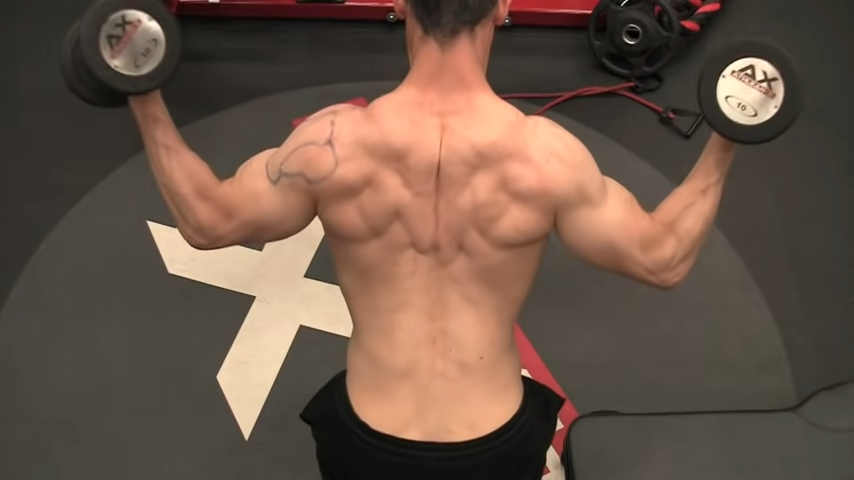
HOW TO DO THE W-RAISE:
- Lie flat on your back, arms at your sides, and legs extended at the bottom position of the ‘W’ (outer leg of the W).
- Engage your core and lift your legs straight up. Lower them halfway down while keeping everything tight, then bring them back up to the top.
- Lower your legs all the way down to the other side of the ‘W,’ keeping a straight line the entire time. Then, reverse the movement to return to the start.
WHAT MAKES IT EFFECTIVE: This exercise is all about control, so stay tight, keep that core locked, and get ready to feel the burn in your lower abs!
BLACK WIDOW KNEE SLIDES

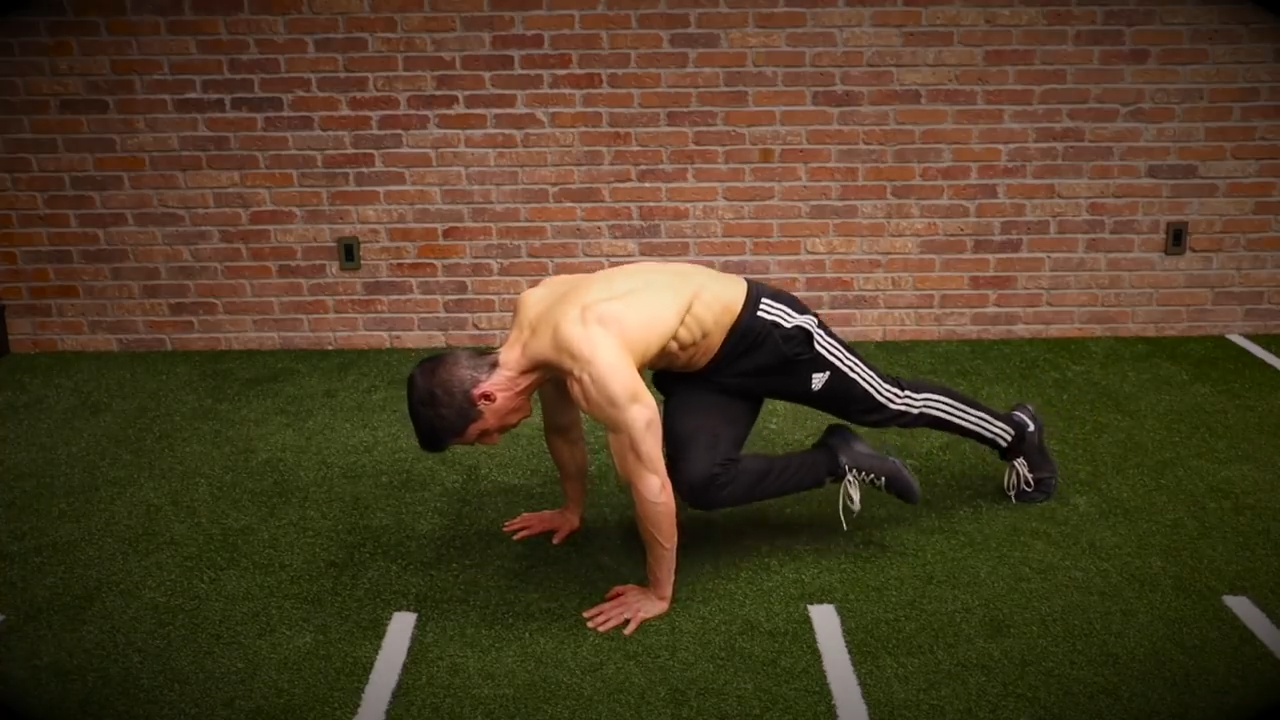
HOW TO DO THE BLACK WIDOW KNEE SLIDE:
- Get into a high plank or tabletop position, with your hands directly under your shoulders and your body in a straight line.
- Drive your left knee toward your right elbow, sliding it up your forearm to get that full posterior pelvic tilt and deep abdominal engagement.
- Now bring your right knee toward your left elbow, focusing on squeezing your core throughout the entire movement.
WHAT MAKES IT EFFECTIVE: This is a tough one, but it’s worth every second. Keep that core tight, get those knees driving across, and feel the burn!
BUTTERFLY SIT UP


HOW TO DO THE BUTTERFLY SIT UP:
- Lie flat on your back with your feet flat on the ground and arms crossed over your chest.
- Use your ab muscles to lift your upper body off the ground while opening your arms into a goal post position. Feel that upper back engage as you reach overhead.
- Slowly lower yourself back down to the starting position, pulling your belly button toward your spine the entire time to keep your core locked in.
WHAT MAKES IT EFFECTIVE: Stay controlled, keep that core engaged, and make every rep count. This move isn’t just about getting off the ground—it’s about total core and upper body control!
SEATED CORKSCREW


HOW TO DO THE SEATED CORKSCREW:
- Sit back with your hands behind your body for support and extend your legs out in front of you.
- Bring your knees in and across to one side, focusing on really squeezing your obliques. Then, extend your legs back out to the starting position and immediately hit the other side.
- Engage your core as you move both your upper and lower body at the same time and keep that belly button pulled in toward your spine throughout the entire motion.
WHAT MAKES IT EFFECTIVE: This move will have your core and obliques burning in no time. Keep your form locked in and focus on that twist!
SIT UP ELBOW THRUST

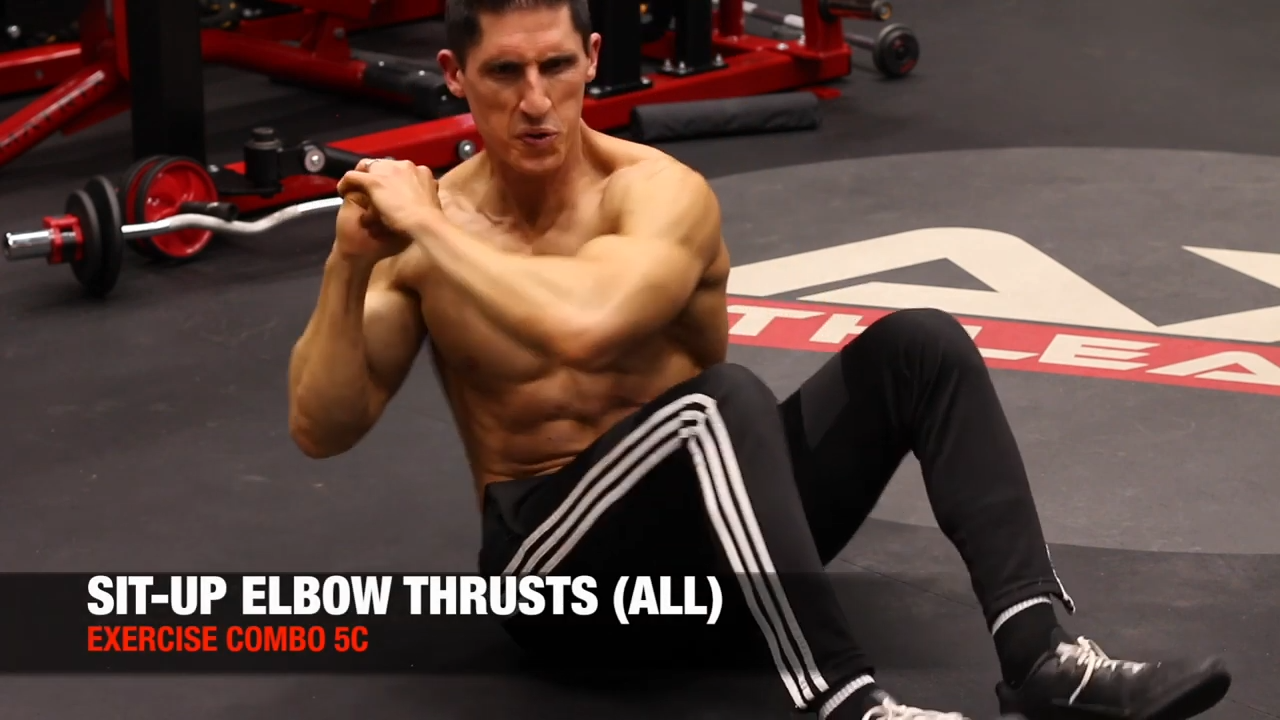
HOW TO DO THE SITUP ELBOW THRUST:
- Lie on your back with your knees bent and feet flat on the floor.
- Sit up and drive your left elbow across your body, aiming to rotate toward the right side. Then come back to center and lower yourself back down with control.
- Now repeat the same movement on the other side, driving your right elbow across to the left.
WHAT MAKES IT EFFECTIVE: This move is all about controlled explosiveness—so don’t be surprised if it feels like a whole new challenge as you fatigue. Stick with it and power through those rotations!
For all the best core workouts at home, check out our article on the best ab workout at home.
WRAP-UP
So, we’ve broken down the core exercises and shown you that it’s not just about hitting the abs—it’s about hitting every part of your core for a complete workout.
Regardless of whether you’re training at home with bodyweight moves or have access to a full gym setup, the key is targeting your core from every angle: upper abs, lower abs, and obliques.
Take the exercises and techniques we’ve covered and put them to work. You’ll be amazed at how quickly your core strength and definition improve when you’re hitting it with precision and intensity.
And if you’re looking for a complete workout program that builds lean muscle, core strength, and burns fat across your entire body, check out our ATHLEAN-X programs.
There’s one tailored to your fitness level and equipment setup, so you can get the results you’re after—fast.
CORE WORKOUTS FAQS
If you’re looking for the most effective core workout, it’s not about just one move.
You need a combination of exercises that hit your core from all angles—targeting upper abs, lower abs, obliques, and building stability and strength through anti-rotation movements.
Here’s a killer lineup that will do just that:
Levitation Crunch: Start by hitting your upper abs hard. The Levitation Crunch is perfect for isolating that area and getting serious contraction without stressing your neck or lower back.
Swiper: To target your lower abs, the Swiper is a game-changer. This reverse crunch variation not only focuses on your lower core but also challenges your obliques with its rotational movement.
Hollow Rocks: Hollow Rocks are brutal for building core endurance and stability. They’re going to keep your core under constant tension, which is exactly what you need for total core development.
Side Plank (Thread the Needle): Now you hit your obliques with a dynamic twist. The Side Plank Thread the Needle adds rotational strength and stability while keeping your obliques firing the whole time.
Pallof Press: Every solid core workout needs anti-rotation exercises, and the Pallof Press is one of the best. It forces your core to stabilize and resist twisting, building deep strength in your core that transfers to every other lift.
Russian Twists: To finish off your obliques, add Russian Twists to the mix. This one’s all about controlling the rotation and keeping your core engaged as you twist through the movement.
Landmine Rotation: For rotational power, the Landmine Rotation is a must. This exercise teaches your core to generate explosive power while also improving rotational stability—key for athletic performance.
Sliding Ab Tuck: Finally, the Sliding Ab Tuck adds a dynamic movement that targets your entire core, especially the lower abs, and tests your ability to maintain stability while moving through the motion.
The most effective core workout isn’t just about getting a six-pack—it’s about building real strength, stability, and control through movements that challenge your core from every angle.
Stick with these, and you’ll not only see the results but feel the difference in every aspect of your training.
Here’s the truth: core workouts alone won’t burn belly fat.
You can do all the crunches, planks, and leg raises you want, but if you’ve got a layer of fat covering your abs, they’re not going to show.
Spot reduction—the idea that you can burn fat in one specific area—just doesn’t work.
To burn belly fat, you need to focus on overall fat loss through a combination of full-body workouts, cardio, and—most importantly—nutrition.
You can’t out-train a bad diet. So, if you want to see those abs, it’s time to clean up what’s on your plate and get your nutrition dialed in.
Core exercises will build strength and define your abs, but burning fat? That’s all about getting your whole program in check.
You can work your core every day, but the real question is: should you?
Your core is like any other muscle group—it needs time to recover.
If you’re hitting it hard with intense core workouts every day, you’re not giving your muscles the chance to rebuild and get stronger.
Now, that doesn’t mean you can’t engage your core daily with functional movements.
But if you’re doing targeted core exercises—like crunches, leg raises, or planks—you need to treat it like any other muscle group.
Aim for 2-3 focused core sessions a week, and let your core recover in between. Remember, it’s about quality over quantity.
You want to build a strong, stable core, not just hammer it with endless reps. Train smart, give it time to grow, and you’ll see the results!
If I had to pick just one, I’m going with the Landmine Rotation.
This move hits your entire core—not just the abs, but the obliques and lower back too.
It’s a rotational powerhouse that builds strength and stability while also engaging your hips and shoulders.
Here’s how it works: Anchor one end of a barbell into a landmine attachment (or a corner), hold the other end with both hands, and rotate the bar from side to side.
Keep your core locked in tight and focus on controlling the movement. This isn’t about speed—it’s about power and control.
The Landmine Rotation gives you the kind of core strength that translates into real-world performance, not just aesthetics.
If you want to tone your core fast, forget about endless crunches and start focusing on the things that actually get results. Here’s the blueprint:
Dial in your nutrition: You can’t see toned abs if they’re covered by a layer of fat. Clean up your diet, get in a caloric deficit, and focus on whole, nutrient-dense foods. Abs are made in the kitchen, not just the gym.
Full-body workouts: You’re not going to burn belly fat by just hitting your core. You need full-body, compound movements like squats, deadlifts, and rows to burn more calories and shed fat everywhere—including your midsection.
Hit your core smart: When it comes to core exercises, focus on moves that hit your abs, obliques, and deep stabilizers. Exercises like Planks, Landmine Rotations, and Hollow Rocks will give you the strength and definition you’re after.
The key is to combine smart training with clean eating. Do that, and you’ll see those abs pop in no time!
You don’t need 30 minutes of dedicated core work to get results.
In fact, you can get a killer core workout in way less time if you’re doing the right exercises. The key is quality over quantity.
Focus on hitting your core with moves that target your entire core, including the abs, obliques, and deep stabilizers.
A solid 10-15 minutes of focused core work, combined with compound movements like squats and deadlifts that already engage your core, is more than enough.
Remember, it’s not about spending endless time on your abs—it’s about training smart and being efficient.
The big 3 core exercises? Let’s talk about the heavy hitters: Pallof Press, Landmine Rotation, and Sliding Ab Tuck.
These aren’t your typical crunches—they’re going to build serious core strength and stability that translate into real-world performance.
Pallof Press: This is a killer anti-rotation exercise. By resisting the pull of a resistance band or cable, you’re forcing your core to stabilize and lock in tight. It’s all about control and strength in this one.
Landmine Rotation: This is your go-to for building rotational power. Holding the barbell in the landmine setup, you’ll rotate from side to side, engaging your obliques and entire core. It’s a must for athletic performance and functional strength.
Sliding Ab Tuck: Want to hit those lower abs and test your core endurance? The Sliding Ab Tuck will do the job. With a sliding surface (socks on a slick floor work), you’ll bring your knees in and out while keeping your core tight and stable.
These big 3 core exercises hit every angle and make sure you’re training for strength, stability, and performance.
You want fast results? Don’t waste time on endless crunches. Here are the 5 fastest ways to strengthen your core and get it done right:
Incorporate Compound Movements: Exercises like squats, deadlifts, and pull-ups engage your core while working other major muscle groups. Every time you stabilize under heavy weight, your core is firing up.
Do Anti-Rotation Moves: Add exercises like the Pallof Press. This hits your core hard by forcing it to resist movement. It’s one of the best ways to build core stability and strength quickly.
Add Rotational Power: Incorporate Landmine Rotations. This move develops explosive rotational strength, working your abs and obliques while building serious core power.
Focus on Lower Abs: Don’t neglect the lower abs. Moves like the Sliding Ab Tuck target those tough-to-hit muscles and build lower core strength fast. Keep your core engaged and resist arching your lower back.
Train Smart, Not Long: Quality over quantity. You don’t need 30 minutes of core-specific work every day. Focus on high-impact exercises and intensity with focused core workouts 2-3 times a week, and you’ll see results faster than you think.
These 5 strategies will have your core stronger in no time, and it’s not about wasting time on fluff. Train smart, train hard, and watch your core strength skyrocket.
Absolutely. In fact, 20 minutes is more than enough—if you’re training smart.
The key isn’t about how long you’re working out, it’s about what you’re doing with that time. You can get a killer core workout in less time if you’re hitting the right exercises.
Focus on movements that hit your entire core—anti-rotation, stability, and power.
Exercises like the Pallof Press, Landmine Rotations, and Hollow Body Holds will challenge your core in ways that endless crunches won’t.
Bottom line: 20 minutes is plenty if you’re making every second count. Train with intensity, hit all angles, and you’ll see results without needing to spend all day on abs.
REFERENCES

Jeff Cavaliere M.S.P.T, CSCS
Jeff Cavaliere is a Physical Therapist, Strength Coach and creator of the ATHLEAN-X Training Programs and ATHLEAN-Rx Supplements. He has a Masters in Physical Therapy (MSPT) and has worked as Head Physical Therapist for the New York Mets, as well as training many elite professional athletes in Major League Baseball, NFL, MMA and professional wrestling. His programs produce “next level” achievements in muscle size, strength and performance for professional athletes and anyone looking to build a muscular athletic physique.






